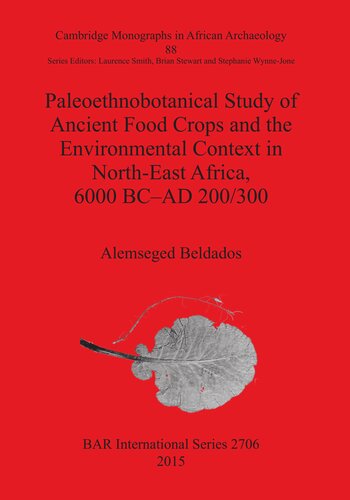

Most ebook files are in PDF format, so you can easily read them using various software such as Foxit Reader or directly on the Google Chrome browser.
Some ebook files are released by publishers in other formats such as .awz, .mobi, .epub, .fb2, etc. You may need to install specific software to read these formats on mobile/PC, such as Calibre.
Please read the tutorial at this link: https://ebookbell.com/faq
We offer FREE conversion to the popular formats you request; however, this may take some time. Therefore, right after payment, please email us, and we will try to provide the service as quickly as possible.
For some exceptional file formats or broken links (if any), please refrain from opening any disputes. Instead, email us first, and we will try to assist within a maximum of 6 hours.
EbookBell Team

5.0
60 reviewsArchaeobotanical investigation was conducted on a total of thirty two thousand (n=32,000) pot fragments, baked clay and fired clay collected from different sites belonging to five Cultural Groups in Eastern Sudan. The Cultural Groups include Amm Adam, Butana, Gash, Jebel Mokram, and Hagiz. Soil samples (6 kilos) were also analyzed from various excavation spots at Mahal Teglinos, a major site that rendered data on Butana, Gash, Jebel Mokram and Hagiz Groups. The objective of the study was to reconstruct ancient food systems of the pre-historic inhabitants of a region of Northeast Africa and its environmental milieu. The result of the study demonstrated the subsistence bases of the inhabitants from ca. 6,000 B.C. to 200/300 A.D. Crops like the small seededmillets (Setaria sp., Eleusine sp., Paspalum sp., Echinochloa sp., Pennisetum sp.), Sorghum verticilliflorum, Sorghum bicolor bicolor, Hordeum sp., Triticum monococcum/dicoccum, and seeds and fruit stones (Vigna unguiculata, Grewia bicolor Juss., Ziziphus sp. (mainly Ziziphus spina christi) and Celtis integrifolia) were cultivated for consumption during this period. The study has also shed new light on the domestication history of Sorghum bicolor. The wild Sorghum, Sorghum bicolor verticilliflorum and its cultivated variety, Sorghum bicolor were simultaneously exploited by the Jebel Mokram Group people between 2,000 B.C. and 1,000 B.C. One of the oldest domesticated morphotype of Sorghum bicolor, i.e. an intermediary phase between the wild progenitor and its domesticated variety was revealed by the same investigation. Morphological change that has occurred while the species was evolving from wild to cultivated is measured using a Leica Qwin software.